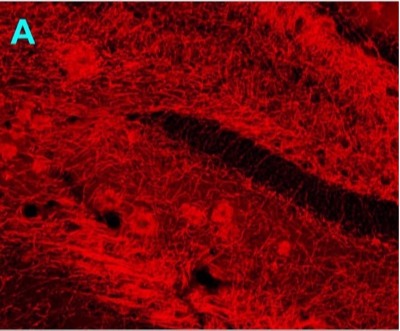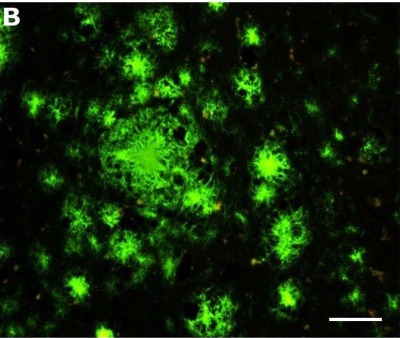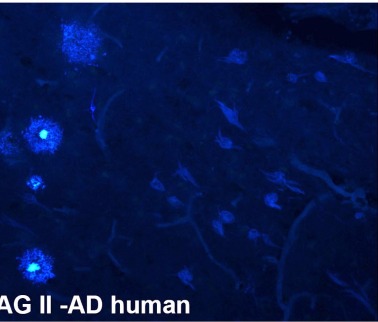Recently Developed
Ethidium Bromide-Red
This tracer stains the cytoplasm and nuclei of neurons a fluorescent red color under green light excitation. The stain is of high contrast, resolution and brightness and is also very resistant to fading. Although most visible under green light excitation, this fluorochrome is moderately visible under blue light excitation and faintly visible under UV excitation.







